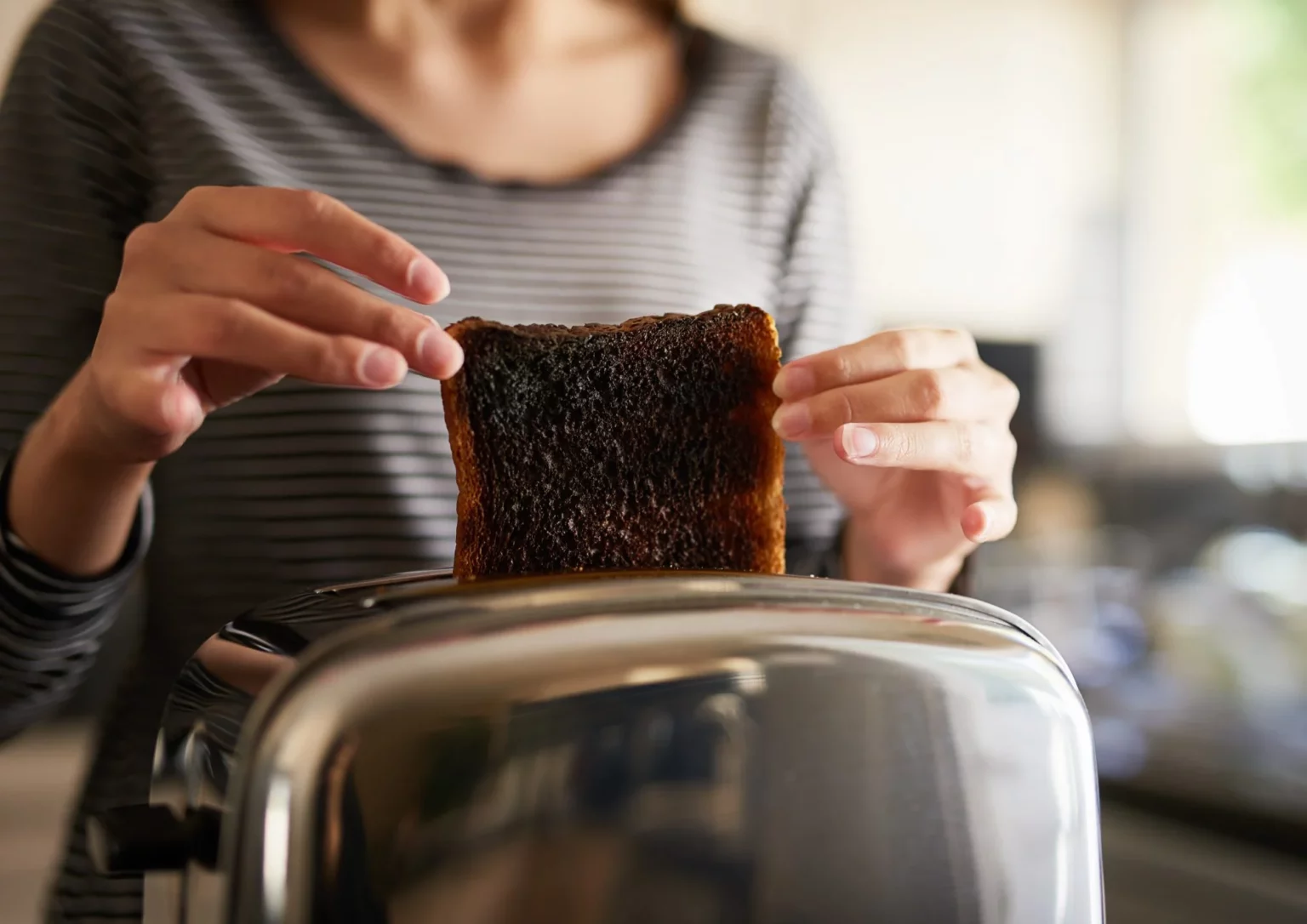Burnt food is a common sight in most households, whether it’s a slightly overcooked toast or a charred piece of chicken.
Many people wonder if consuming burnt food poses a health risk. The answer to this question is not straightforward, as it depends on the type of food and the extent of the burn.
When food is burned, it undergoes a chemical reaction that produces acrylamide and polycyclic aromatic hydrocarbons (PAHs). These compounds are known to be carcinogenic, which means they have the potential to cause cancer. Therefore, consuming large amounts of burnt food could increase the risk of cancer.
PAHs are formed when food is grilled, smoked, or roasted at high temperatures. They are present in the charred parts of meat and can be harmful when ingested in large amounts. Acrylamide, on the other hand, is formed when starchy foods such as potatoes, bread, and cereal are cooked at high temperatures. It is present in the browned areas of these foods and can also be harmful when consumed in large amounts.
Although acrylamide and PAHs are known to be carcinogenic, the levels present in burnt food are usually not high enough to cause immediate harm. The risk of cancer from consuming burnt food is generally low, especially if it’s consumed occasionally. However, regularly consuming burnt food could increase the risk of cancer over time.
Apart from the risk of cancer, burnt food can also be harmful to health in other ways. For example, burnt food can cause inflammation in the body, which can lead to a variety of health problems such as heart disease, diabetes, and stroke. It can also cause digestive issues, such as acid reflux and indigestion, especially in people with sensitive stomachs.
So, what can you do to reduce the health risks associated with burnt food? Here are some tips:
- Cook your food at lower temperatures: Cooking your food at lower temperatures can reduce the risk of burning it. Try to avoid cooking your food at temperatures above 250°C (482°F), as this can cause the formation of harmful compounds.
- Avoid overcooking: Overcooking food can increase the risk of burning it. Try to cook your food for the recommended time, and use a food thermometer to ensure it’s cooked to the correct temperature.
- Don’t eat burnt food: If you notice burnt parts on your food, it’s best to cut them off and discard them. This can reduce the risk of ingesting harmful compounds.
- Use cooking methods that produce less burnt food: Boiling, steaming, and poaching are cooking methods that produce less burnt food than grilling, frying, or roasting.
Burnt food can be a health risk, especially if consumed regularly. The risk of cancer from consuming burnt food is generally low, but it’s still important to take steps to reduce the risk. By cooking your food at lower temperatures, avoiding overcooking, and using cooking methods that produce less burnt food, you can reduce the health risks associated with burnt food.




